My name is Lauren Pomfrett, I am a landscape photographer, specilising in photojournalism and rural settings
Don't wanna be here? Send us removal request.
Text
Booklet Third Draft








This is the third draft, before presentation in the final week of class where I can get some final feedback before submission. I would like some notes on my layout, if the sizing of my images are right (I feel that they may be too small and need to be spread out more), and if the text is aligned/positioned in the best way possible.
I am happy with my selection and my editing, but am open to new ideas on how I can improve this more. I also would like some comments on my title, and if it is making my audience think about the contexts behind my photo book.
0 notes
Text
Working Men: Glenn Busch Photographs



Glenn Busch, born in 1948, is an Auckland based photographer who portrayed 30 men in his seminal book "Working men" from between 1981-1983. Busch captured these manual labourer workers in their natural environments and avoided the use of studio lighting nor planned photoshoots.
His subjects faced the camera where a full body shot would showcase their identities paired with their livelihood. The unique ways of how these 30 men stood to be photographed, as an example with a wider stance, or hands in their pockets, it give a glimpse as to how they express and represent themselves.
Busch taped extensive interviews and edited them down to create powerful texts sided with each individual portrait to allow for them to have their say and tell their story.
References:
Artist Model Analysis’. (2014). Hannah Gentry. https://hannahgentryphotography.weebly.com/artist-model-analysis.html
Maurice, G. (1981). Busch, Glenn Maurice, 1948- :Photographs from the “Working Men” series | National Library of New Zealand. Busch, Glenn Maurice, 1948- :Photogra... | Items | National Library of New Zealand | National Library of New Zealand. tap:242666
0 notes
Text
800 Word Document Draft + Feedback
During my research, I was drawn to the representation of identity and culture using visual cues such as costuming, location and subject matter. I was engaged with self portrait photographers such as Dionna Bright, Uldus Bakhtiozina and Brian Oldham who each bring their unique perspective by creating elaborate narratives, pushing the boundaries of conventional ideas and representing their individual cultures. Their photos felt intimate, raw and expressive, creating a strong bond with the viewer where a personal connection of relatability is made. I felt inspired by this use of emotion to draw the viewer in and I saw great beauty in the vulnerability of being unapologetically themselves.
For example, Uldus Bakhtiozina, a Russian photographer, expresses her family background as well as her mixed religions and nationalities. Her photographs poke fun at a narrow mindset and judgemental thinking through turning cultural stereotypes upside down. With how upfront the photos feel, there is no sugar coating and we are forced to face unconventional ideas.
This discovery was an inspiration for my own identity journey. When I was a young child, I lived in a rural town, Kaukapakapa, where everyone rode horses, wore gumboots, worked on their farm, harvested livestock, grew their own vegetables and found entertainment in the corner store dairy. A simple farmer's life was led and it was common to stay close to home.
I have unique access to parts of town that only locals would know existed and would know the significance of to the community. My aim is to portray myself and the people of this left out region, showcasing the intricate lives and identities that have been built to support the town. I will focus on people working at their jobs, attending community spaces, enjoying the local bakeries and convenience stores. I would like the reader to feel a sense of nostalgia and belonging, as if experiencing it themselves as a local resident. I want the photos to feel intimate, personal, and as if there is a strong friendship of people documenting their lives together.
I now feel inspired by the works of Robin Morrison, a documentary photojournalist who portrayed the entertainment of life and place in New Zealand. He allowed the photos to speak for themselves and captured the natural drama and stories of the people he photographs. Morrison felt drawn to his country, the traditional landscape of a rural setting, and had a passion for visually exploring his interactions with others. The shots were not just lit by the sun or a lamp, but the eyes of Morrison and the power of how his vision has standed the test of time.
CURRENT WORD COUNT: 436
0 notes
Text
Week 9 Roll of 36






It was nice to revisit those we had seen last week as well as new people who we got to know for the first time. During the time between visits, I made contact with Helen and Chen, Henrietta and Paula, Tina, and Karen. I shared the photos I had taken and also asked if I could return to take more photos, especially highlighting their business store fronts. I received positive replies from Helen and Chen, Henrietta and Paula, and Tina. Karen did not respond back to me and when I was taking a photo of her last time, I got the impression that she was less comfortable with participating. I did not want to make her feel awkward, so I did not revisit her.
I wanted to show Helen and Chen in front of their bakery, specifically by their sign which had to be updated with the new opening days, to show how their health problems have negatively impacted their work. Interestingly, Chen had a bandage over his eye, likely from a fall. This paired with their aprons created a sad atmosphere of a hard working couple trying to get by.
Janice McMurdo with working alongside with Henrietta trying to open their thrift store. We learnt that Janice used to be the owner, but has passed it onto Henrietta so she could focus on her "Food for Thought" commercial kitchen next door. Janice had made a walnut and whiskey loaf, because she had a little bit of whiskey left, so she used what was available. Janice used an air fryer outside to heat up the loaf. Paula was around to try some of the loaf and during this time Henrietta explained how she had asked Paula to leave the table and chair outside her store, because she sat there for two days straight. We found this surprising because they seemed to get along well, and Paula matched the personality of the store, we did not dwell too much on this 'local drama'.
Janice thought I was studying Journalism, and so she brought out her self-published books that she was proud of! She said she used to do writing workshops with Kaipara college, but had moved on to other things and was not writing anymore.
We went across the road to revisit the Helensville Public Library that I used to go to a lot to get out children's books for bedtime stories. We got to know Anne and Julie, who were librarians sat behind a table blocking the glass entrance. Anne said she had been a librarian for more than 20 years! When we asked about their set up, they explained that they had been struggling with asbestos in the library, which meant they had to close for renovations. When they thought they could re-open, they discovered that the wheelchair access had rotten away and were further delayed. They had to develop a system where people could order their books and pick it up in a paper bag with their name on it. They have not been able to reopen the library for almost a year. We were shocked to hear that their only public library, was not open to the public.
Next we visited Jeena, the manager of the IMAXX Indian restaurant. We recognised the store as a place we used to order Indian takeaways back when we lived in the area. I used to live in Kaukapakapa, but we had to travel to Helensville to get any Indian food. We have a personal connection to India as my dad works for Infosys, an Indian tech company with a branch of workers based in New Zealand.
In the past, driving to my grandmother, we had driven past a book stall on the side of the road, but this time noticed the book seller himself operating the stall. We pulled over, and was introduced to Paul Williams. We asked about his work, and how he was clearing off a clear plastic film that had protected the books from the rain. He sourced the books that nobody else wanted, that the library had discarded or from collectors who were downsizing. He was making the books available for a low price of 50c each. We asked about his 'competition' with the Lions Book Fair, which was being held the same day, at the show grounds north of town. He said he used to sell books at the Mangawhai fair, (where we used to have a beach house and have been to the same book fair he was referring to), but there was no competition because his books were available every weekend. Paul said he would happily take any books the Fair did not want in the future.
One line that we loved that Paul said was: "Ive lived here for 34 years, so that makes me almost a local"
Finally, we revisited Tina, who was very busy in her convenience store. We were happy to wait the 10 or so minutes that she needed out the back to free some time up for us. She had her staff member take over the register for a few minutes while we took her photo outside of her store. This front was very unique with a book trading station, fresh flowers that were past their prime and muffin tins.
0 notes
Text
Cornelius RAW photo editing workshop


This lesson was very useful! Cornelius went into great detail with us on how to edit RAW photos in order to create the most accurate and correct lighting of a photo. Before this session, all of my RAW editing had been done using camera raw, but I had made my adjustments with just what 'looked right' and did not consider how far I was pushing the adjustments to the extremes.
First we learnt to turn off the chromatic aberration and the profile corrections to change the lens profile to match my canon camera. This made a big change where the image would remove the curved distortion and flatten any warps! We then learnt to turn off sharpening from 40 to 0, which was interesting to learn that it was a default feature.
One of the most important things I learnt was that I can use the colour picker tool to find the lightest and darkest tones of an image, see the recorded number scale between 0-255. The aim is to make the blacks no less than 5 and the weights no more than 250. We can do this by adjusting the exposure, highlights, shadows, whites/blacks. It was advised against to use contrast to change the lighting. I made note that when adjusting the scales, to not go high that +50 or lower than -50, as it would make too much of a harsh adjustment and would sacrifice other features. It is not worth pushing an edit to the extremes such as making it brighter if it is going to sacrifice the blacks.
We also learnt how to resample and adjust the size of an image, without losing any definition or pixel count, but making the file size more manageable for exporting. We have learnt to not compress a folder into a JPG or PNG, as it would remove pixels and take away colours and detail from a photo.
0 notes
Text
Title ideas:
Inspirational quotes:
"Why do you go away? So you can come back. So that you can see the place you came from with new eyes and extra colours. And the people there you see differently, too. Coming back to where you started is not the same as never leaving." - Terry Pratchett, 'A Hat Full of Sky'
"People who stay in the same town with the same friends for their entire lives never get a chance to find out who they can really be, because they will always be considered as who they were." - Lisa Unger, American Author.
"It is easy to forget how full the world is of people, full to bursting, and each of them imaginable and consistently misimagined" - John Green, Paper Towns
"Consistently misimagined"
"Time to talk to each other"
"Who they were"
"Grow good people"
"In having new eyes"
"She's back home"
"Don't let it make your life small"
"Big dreams"
0 notes
Text
Booklet Second Draft












I got some feedback with this photo book from Natalie and from my peers. Firstly, that the hospital shots should be white balance adjusted to take away the blue tones. I had thought that the blue would give a more clinical and somber look, but it had altered the skin tones and it was not necessary, as the nurses were wearing blue scrubs. I would like to readjust this to add some warmth back in.
I think I would like to pair images together to better create a sequence such as store workers all together, the retirement home with residents and workers, the pre loved clothing store and the bakery. I think I need to remove the self portraits, as they do not match my current direction. I also was given advice to add text to tell the stories of the people who I have photographed and interacted with.
0 notes
Text
Week 8 Roll of 36




In this shoot, I visited Helensville and Kaukapakapa to take photos of people inhabiting the area. It was important to me to make my subjects feel comfortable with being in front of the camera, so I made sure to introduce myself to everyone and offer to send my photos to them so they could approve of how they were being represented. I brought my Dad along with me as he has a lot of memories of who I interacted with when I was younger.
We first visited Helen, and her husband Chen, who we learnt had recently suffered from a heart attack and was struggling with his health. Their bakery, which was usually opened 7 days a week had to be reduced to 6 days. We were very surprised to see how cheap their food was, with being able to feed three people for under $12.00, and thought about how if they were to increase the prices, they could help support Chen and his health problems easier. We felt sad that they were still working long hours, when they should be enjoying their retirement. My dad said he recognised Helen and Chen, saying how they had sold us bakery goods long ago when I was a child after netball on the weekends.
We visited my grandmother in her retirement home in Parakai. It is difficult to visit her because she has dementia and she does not remember or recognise any of us anymore. She also struggles to form coherent sentences so holding a real conversation with her is not possible. It was her 94th birthday and so we spent the morning with her to celebrate. She was saying how it was "nice to meet us", we were all hurt by this as we are complete strangers to her even after we have introduced ourselves as her son (my dad) and her grandchildren (my sister and I). I also took photos of her primary caregiver, Jeff, who tells us about how she has been since we last saw her. She recently had to be restrained to her chair because she kept falling off and hurting herself. It made me sad, it feels like she is just exisiting and not living as herself anymore.
To cheer us up, we visit Karen in the 4 Square that is neighbouring the home and get some chicken and chips for the ride home. She often asks us how our grandmother is, as she knows we come to visit her. Karen often gives us extra chicken that we order, sometimes the box is too full to close!
On the way back home, we stopped by Henrietta at her antique thrift store. She had her friend Paula outside who was smoking a cigarette, doing a scratchy ticket (that she saved up for by bringing a coffee from home) as well as drinking a V energy drink. Paula was very charming, personable and had lots of stories to tell. She said she liked to spend her time outside of the store and eat the food that the neighbouring commercial kitchen "Food for thought" offered. Henrietta was busy running her stall but she showed me photos of another photographer who came in and did something similar to me.

Finally, we stopped by Tina, who used to sell my sister and I lollie bags for $1 after school before catching the bus home, and she still worked there! Her store felt like a time capsule, one that had not changed in more than 10 years.
0 notes
Text
Booklet First Draft








I made this booklet in class, but I feel like the self portraits and the portraits of others feel disconnected and are representing two different ideas. I would like to revisit Helensville and Kaukapakapa to take more photos of others who are living in the region and focus on this aspect for my book.
0 notes
Text
Robin Morrison






Robin Morrison was a documentary and photojournalism photographer who was best known for his portrayal of the quirky New Zealand countryside and of everyday life with The South Island of New Zealand—From the Road, in 1981, containing 155 photos. The 2000 copies of the publication sold out very quickly.
His earlier photos in 1975 utilised the rule of thirds placing his subjects to one side and leaving two thirds empty for an interesting background. These created simple yet striking compositions that were able to draw the viewer in. It was described that his use of this technique was the first stage of his photojournalism career.
He wanted to define his country and his identity with the unique characteristics of the people inhabiting it. He was intrigued with photographing 'how they present themselves, their way of life, how their buildings are constructed and painted, how they have altered the landscape'. He explored the world as how he had interpreted it as specific to the time and place and that his photos are a reflection of who he was at that stage.
When creating his publication in 1981, he used a clinical process when taking a photo. He would make sure the lighting was right, shoot the photo in a way that allowed the drama within to open up. He wanted to make sure that a piece of his vision also was evident in the photo, as if they light came from his eyes.
He relied on his patience to take his photographs, happy to wait a few more minutes for the sun the be in the right spot or for someone new to walk into the frame. He made lots of little adjustments such as moving slightly to the left or right until it felt right to him.
The photo book Robin Morrison—At Home and Abroad in 1991 enjoyed an 'entertainment of life and places'. It captured New Zealanders living their day-to-day lives no matter how messy.
“This is my country. Exploring it visually, and sharing my explorations with others, is my life’s work. I have no other country and no other task.” (Robin Morrison 1992).
References:
Chapple, G. (2023). New Zealand Geographic. https://www.nzgeo.com/stories/thats-a-robin-morrison-shot/
21 2PhotographersB | Art New Zealand. (2024). Art-Newzealand.com. https://art-newzealand.com/21-2photographersb/
0 notes
Text
Edith Amituanai

Edith Amituanai, a New Zealand photographer and artist created a series "End of my driveway" in 2011 where she photographed school aged children walking to and from school.
The concept in itself was simple, but it showed the beauty of taking interest in other people's lives as we view their world go by. Some of the children noticed the camera and others were too distracted in their conversation. We can see how they express themselves, finding unique ways to personalise their uniform with shoe and sock colours, hair styles, bag designs, objects they are holding and how they get to school. I love how each individual creates a unique connection to their environment.
I took photos of her installations from the Auckland Art Gallery when it was on show in the winter of 2023.
0 notes
Text
Nikki Boon



Nikki Boon, a mother of four, is a Marlborough based photographer. She takes portraiture of her children documenting them playing and living their lives in the countryside. Her work is described as being "a rebellion against the conventional family photograph" and "Visual stories that unfold in curious and complex ways photographs"
Niki's photograph are inspirational to me as I hope to showcase the lives of people living in the small rural towns of Helensville, Kaukapakapa and Parakai. I want to shed light onto the real communities of people who have complex stories to tell, jobs to work day by day and friends/families to support. Her work feels quirky, unconventional, gritty, unique, authentic, charming and makes us question our pre determined ideas of people. I hope to create a similar atmosphere with my photos.
Her photos are monochromatic, creating a historic, nostalgic, relatable and raw tone. The use of a vignette to create drama, a grungy/edgy tone and draws our eyes into the focal point of the children in the middle of the frame.
Niki Boon Photo. (2021). Niki Boon Photo. Niki Boon Photo. https://www.nikiboonphoto.com/
0 notes
Text
Week 7 Roll of 36



I travelled back to my rural upbringing of Kaukapakapa and Helensville in the Kaipara region. I have a history and deep connection to this region and wanted to showcase my identity with clothing and location.
These self portraits were taken along my old street, Oyster Point Road, with old wooden fences, cow gates and deep hills. I brought a number of costumes with my such as overalls, gumboots, sun dresses to play with how fashion ties into my identity and expression.
I also travelled to more run down and abandoned places that create a contrast of ideas such as a dangerous real estate building and an unused railway track. By loitering by these spaces, it creates ideas of rebellion, contrast, uncertainty yet curiosity.
The lighting for this day started out sunny and bright, creating a warm atmosphere with strong shadows. I experimented with strong silhouettes and poses that creates dynami shadows. I also experiemented with the sun on different sides of my body like front on, side on and behind my head.
This clouded over to a cooler tone later in the afternoon with a much more balanced spread of light. This created a duller, somber, and motionless atmosphere that emphasises the stillness of rural towns that are slowly fading away,
0 notes
Text
Semester Break photos



With these self portrait photos, I was experimenting with rural and urban fashion wear with gumboots, heels and formal dresses. This shoot reminded me of a magazine cover.
During this time, the afternoon sun shining through the trees. This sunset was hot, intense and strong which did negatively impact the readings and result of my photos, with the exposure being too strong. If I had a diffuser it would have softened the light and created an more evenly balanced light distribution. When looking at the readings, I often had values of 255 and 0 for white and black which is unwanted. However, I do like the composition of these images with the use of costuming and location. The light peeking through the leaves creates an interesting composition and ties into themes of nature and immersion.
0 notes
Text
Photographic campaign questions
Who do you want to photograph?
I want to revisit Helensville, Kaukapakapa and Parakai to capture the lives of people who live in my childhood town and neighbouring communities.
What might link the group together?
Living separate lives but tied by their common location
Working individuals, old people in a retirement home with my grandma, people I find along the street
What do they have in common?
All are familiar with rural living, farms, livestock, a slower, simplified life.
Everyone knows each other and keep connected with everyone's life.
What are potential strengths to the concept?
Showcasing the lives of those who we may overlook and forget about. By providing an opportunity to have their stories told, they can be appreciated for what they contribute to their community.
How they have made an impact on my family growing up, creating positive memories and making my childhood a happy time.
I would like to send the photos I take to the subjects personally by getting their contact details so that we both can feel benefitted from the interactions. I hope this will brighten their day and that they feel appreciated.
What are the potential threats or weaknesses to the concept?
To practice photography ethically, I would like to interact with my subjects and create an environment where they feel comfortable to have their photo taken. However, this may remove the natural 'moment' of being unaware of a camera and my photos may feel forced or awkward.
I also am relying on the cooperation and availability of people in order for this concept to work, which may prove difficult if many were to refuse having their portrait taken.
1 note
·
View note
Text
Conceptual ideas
Fashion photography - Combination of masculine and feminine clothing; ties with dresses, shorts with heels.
2. Helensville, Kaukapakapa, Parakai revisit to capture the lives of people. Bakeries, retirement homes, dairies, hair salons, petrol stations, post offices etc.
3. Self portraits in a rural setting, reconnecting with my childhood lifestyle as an adult who has been removed from the scene for a long time.
0 notes
Text
Kassel Dummy Award
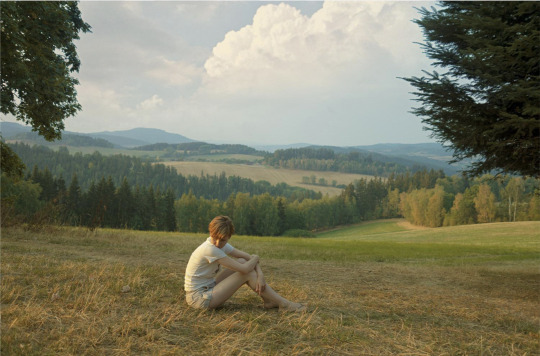
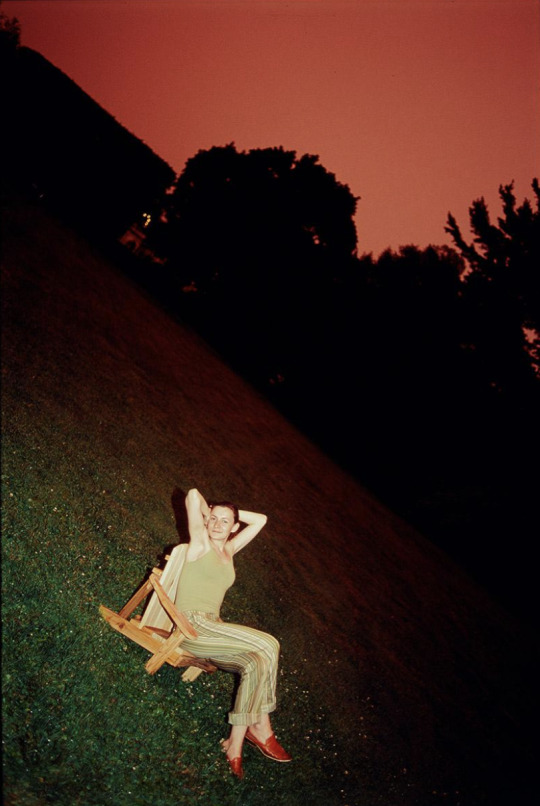
Stas Ginzburg
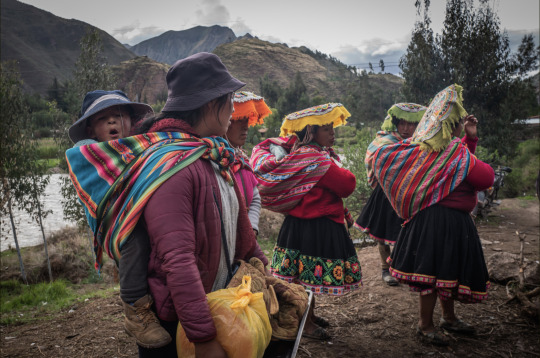
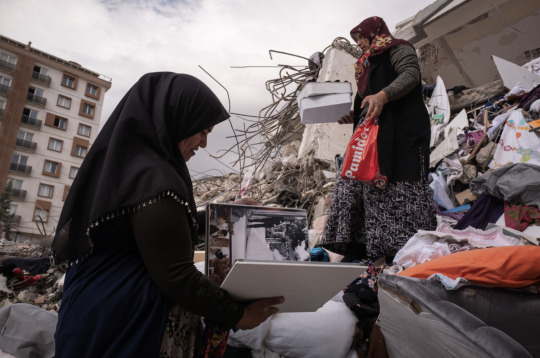
Nicola Zolin

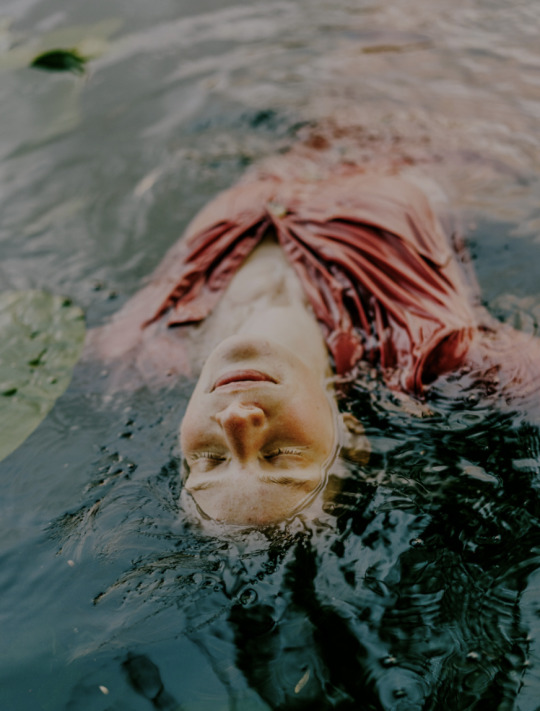
Patrick Slesiona
0 notes